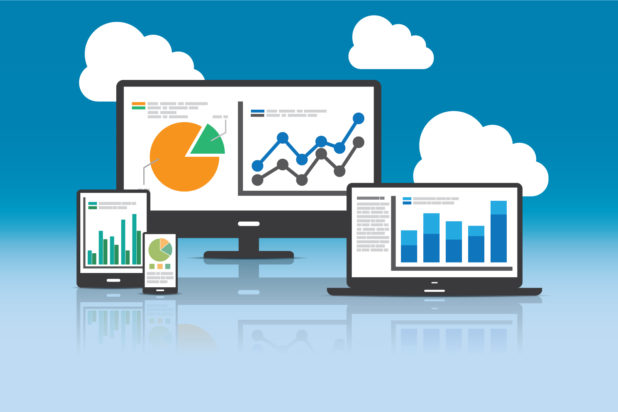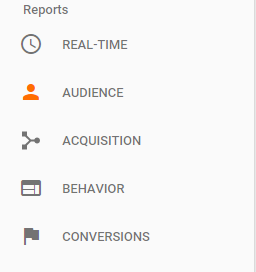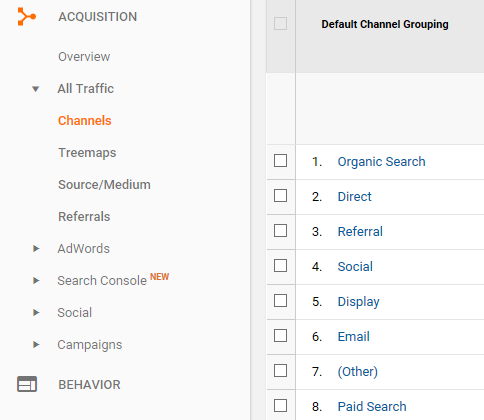
Like it or not, pleasing the Google algorithm is the best way to increase page ranking and move your website to the top of web searches. While the algorithm is a mystery to many of us and changes happen so often that keeping up with the right SEO strategies can be hard to do, there are definitive things we can do to stay ahead of the curve. Watching what your audience wants, via Google Analytics, to ensure you are delivering valuable content to the market, is one way to make Google happy.
Here are nine metrics you should watch to ensure you are keeping your e-commerce audience happy. Access this information by exploring the Reports drop-down menu on the left side of your Google Analytics dashboard.
1. Audience > Mobile
Although the stats show that there’s a greater amount of money spent by desktop users, this does not discount the fact that mobile users are flocking to e-commerce sites in vast numbers, most likely for pre-purchase research purposes. So, if you want to ensure your site caters to the right audiences, you will want to pay attention to this section.
2. Acquisition > All Traffic > Channels
For tracking SEO success, you will want to look at organic search. This number will tell you how many visitors arrived at your site after conducting an “organic” (non-paid) search online, thus letting you know if your search-optimization efforts are paying off.
3. Acquisition > Campaigns
There is a lot you can learn here about the keywords driving traffic to your site, both organically as well as paid. Within this module, you can either rely on the default information provided on keyword referrals, or you can create custom campaigns.
4. Behavior > Site Content > All Pages
If you are looking for a baseline understanding of your visitors’ activity on-site, this is the perfect place to start.
- Pages per visit let you know if that page inspired visitors to roam around your site.
- Average time on page indicates how well that particular page holds your visitors’ attention.
- Bounce rate tells you which percentage of visitors leave your site immediately after visiting that page (which is usually not a good sign).
5. Behavior > Site Content > Landing Pages
A landing page in Google Analytics terminology is the first page someone arrives on when they come to your site. This metric will let you know what sort of content, products or information draw visitors to your site.
6. Behavior > Site Content > Exit Pages
Exit pages are the last ones visitors view before bouncing off your site. If you are worried about a lack of conversions, this metric may provide you with some insight into what’s creating friction in the user experience.
7. Behavior > Site Search > Search Terms
An on-site search toolbar is important for e-commerce websites as it helps users quickly find the products or services they are most interested in. If you want to improve the visitors’ experience, use this information about the most common search terms and update your content to accommodate their preferences.
8. Conversions > Goals
This section will take some work to get up and running, but it will be worth it in the long run as it will help you track your e-commerce site’s specific goals. Do you want to make 100 sales a day? Do you want to know how many conversions resulted from a specific keyword search? Plot out the goals that matter most to your business and lay them down here so you can better track your site’s wins (and losses).
9. Conversions > Ecommerce
This is another section that is essential for e-commerce sites. You will learn how your product pages are performing, how sales tie into the rest of your site’s performance, if there are any stopgaps keeping visitors from purchasing, and so on.
Google Analytics provides more than just the number of visitors or conversions. The data collected by Google Analytics tells a story. Who are your visitors? Why are they here? What drives them to convert? Ultimately, these metrics let you know what more you could do with your site to improve your customers’ experience and consequently make more sales.
About Endicia
Endicia is a leading provider of internet-based postage services that make it easier and more affordable to ship parcels through the U.S. Postal Service®. We know that shipping can be complex and our goal is to simplify your shipping operations so you can focus on doing what you do best. Visit us at www.endicia.com to learn more.






